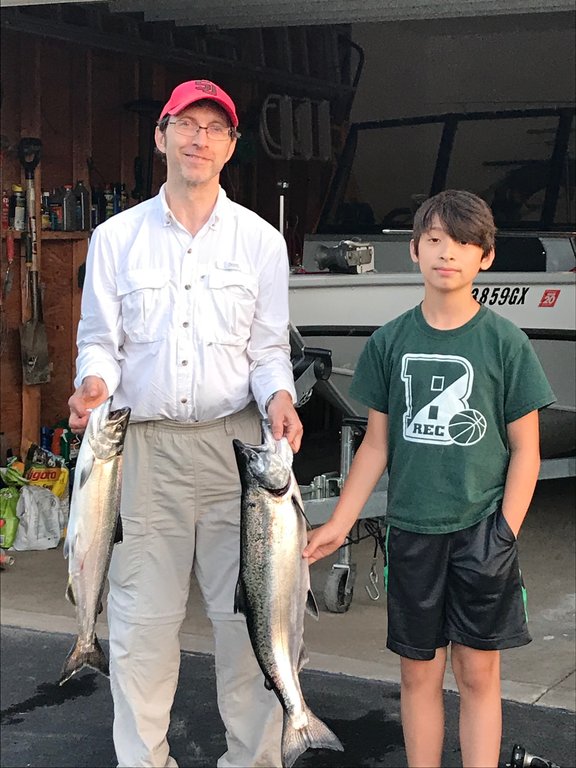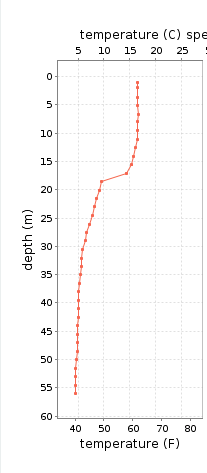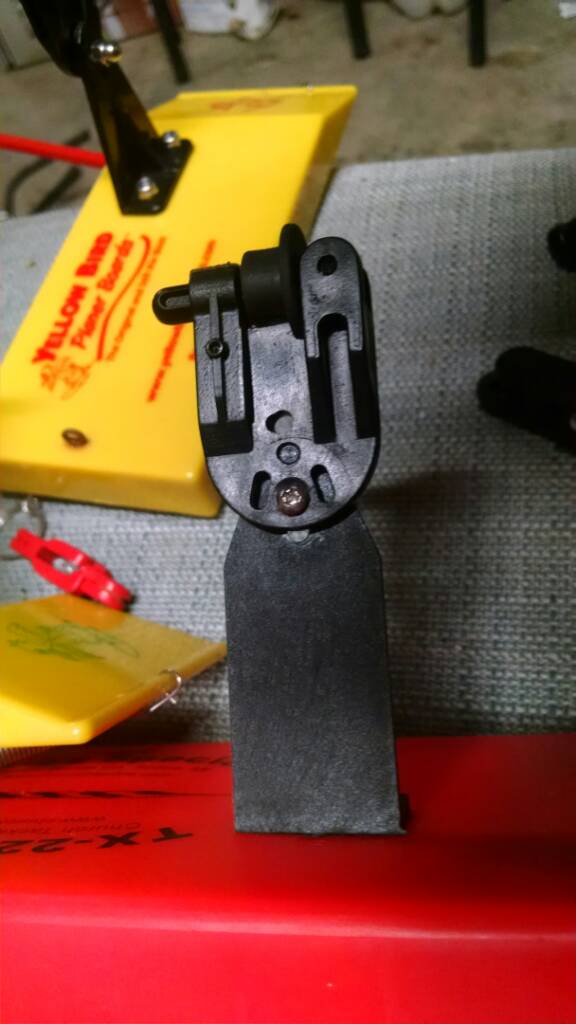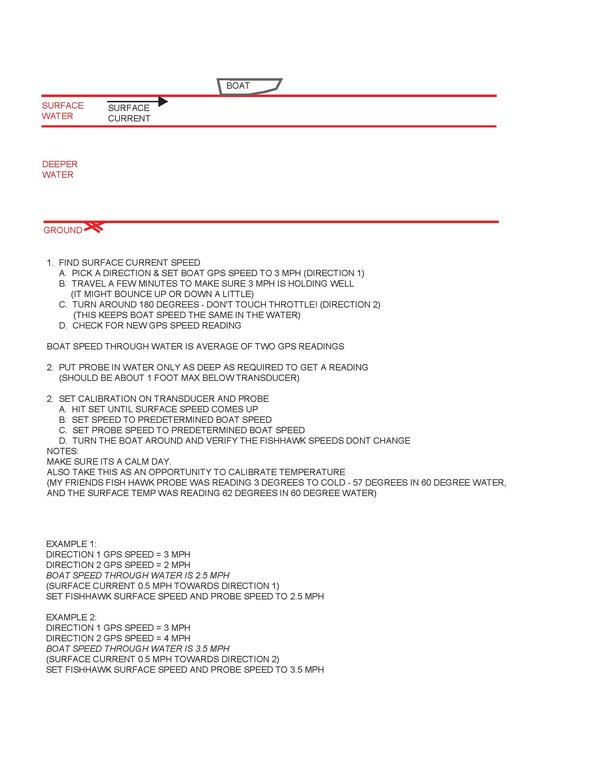-
Posts
13,865 -
Joined
-
Last visited
Everything posted by Sk8man
-
If the mudline is still present and with these crazy winds and mixed up water temps I'd be trolling to just the outside of the mudline and in and out of the edge with the lures running dowwn toward bottom for the browns especially if the sun is up bright.
-
Sounds as though the decision is already made jigstick You can't always worry about ball busting buddies either...I'd be in a mental institution if that were that case because ALL my buddies do it regardless of whether the issue is valid and....I do the same thing to them but I still make my own decisions and let the chips fall where they may. If you have the funds available and are comfortable with the decision...go for it OR break from the pack and take your chances. Even aside from fishing this is kinda what life is all about.
-
It seems as though this is like a lot of considerations buying fishing equipment now days and the issue of "expensive=quality" combined with "Do I really need this?" I guess if you live in Beverly Hills this may not seem like much of an issue, but for many of the rest of us paying $400 for a set of planer boards may be something to really think over.. take for example the lights on the boards....do you fish a lot for walleyes at night using the boards? If only occasionally then some small cheap LED lights can easily be added to other less expensive boards and still do the job. The main consideration with big boards is: how well do they track and will they effectively pull the set-ups I intend to use. A good part of this is how your mast (or intended place of attachment) and planer reels are set up which is separate from the specific board selection. The entire purpose of the boards is to maintain your lines out away from the boat and water turbulance and many brand name boards will do that that are far less expensive although some may do it a bit better than others. If it were me I'd be comparing carefully and determining whether you feel comfortable laying out that kind of money and whether it is actually necessary. But on the other hand....thats me.
-
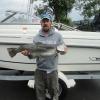
Sandy Cr 6/8
Sk8man replied to Ric66's topic in New York Fishing Reports - Lake Ontario (South Shore)
-

Sandy Cr 6/8
Sk8man replied to Ric66's topic in New York Fishing Reports - Lake Ontario (South Shore)
-
-
X2 on great Lakes Lure Company. You may also want to check with Pam Brewer at Brewers Sportig Goods in Ovid if you live out that way.
-

How much thrust electric for 14 ft. aluminum?
Sk8man replied to landingzone's topic in Open Lake Discussion
Keep in mind the bigger you go the more battery usage which also applies to the throttle You should be fine with a 55# and can get by with a little less. Some of it depends on your battery size/capacity too. Hopefully your Honda has an alternator too. -
thanks for the positive comments cinnamon fish....much appreciated.
-
-
To answer your initial question: drifting with both live or dead bait has been done for years on the Finger Lakes. It can be done with the single method using a three-way swivel with sinker suspended (weight adjusted to conditions) with various length leader, the method you mentioned above, or using multiple leaders on a Seth Green rig with treble or double hooks and live bait slowly drifted through the water. Night fishermen have used a modified version of this rig for years while anchored as well. The problem with using the multiple leader rig on Lake O is the presence of kings as they could easily destroy one of these rigs by tangling it up in ways you've never seen The key to the drift method is the wind direction and velocity. Conditions have to be nearly perfect to do it successfully e.g. light wind blowing from a favorable direction for your position on the water to achieve the right flow and speed. It can be a lot of fun and effective when done correctly.
-
I think katydid is correct. The movement of the jig attracted the impulsive (instinctual) feeding urge of the laker much like action of a spoon or stick when trolling. When they are feeding on live bait they often "test" the live or dead bait first which is noted by a tick tick on the rod tip. If they don't feel resistance they then will grab the bait and run with it. At this point they may not even have the hook in their mouth or throat which is why you don't pull on them yet. You wait for them to stop (perhaps turn the bait around in their mouth?) and swallow the bait (usually head first) then they run again and then you pull on them. What I am describing here is a feeding "process" rather than an impulsive chase/grab which applies to the jigging. If there is a lot of bait present they can afford to be "fussy", but they are nearly always vulnerable to their impulse to strike something moving near them when near bait. This could also explain fish with multiple bait still in their mouth throat and stomach still striking a moving jig or lure. They may not be all that hungry but the impulse to grab bait is still strong and determines their behavior. I know this is pretty hypothetical but after seeing it happen a few thousand times it is a strong hunch
-
I think you may have identified part or all of the problem. The rods may be too high up vertically forcing the boards downward and pulling them towards the boat. They perhaps need to be lower and especially pointed more horizontally " My rods are higher than the roof on my boat....placed in rod holders on my roof supports. The rods point extremely vertical, and towards the stern of the boat. Maybe if I had them point lateral....the boards would plain more?"
-
or https://give.salvationarmy.org/event/ithaca-fishing-derby-2018/e173384
-
If the boards are set up with the line in the main release (most of us set it up so the line is either clamped down very tight and/or wrapped arounf the release so it won't actually release) and then undo the board on the way back in manually. From the main release the line should go through the pin area at the back of the board to the lure. With that as a given there aren't many things that could prevent the main line from going out with the board attached to any reasonable distance other than too slow boat speed, the line slipping in the main release with the lure going back but leaving the board as is, or the lure overcoming the pull of the board.
-
Might want to try using the Church walleye boards as the weights on the bottom are adjustable. I've pulled 10 color behind them but with spoons not cranks. The crankbaits generate a lot of pull on their own depending on size. I have a set of the TX44's and actually started with them but I view them as overkill for eyes and they are much clumsier to use in that situation especially if they dive on you but they do pull a lot of hardware behind them.
-
I sent the Salvation Army an email about it so hopefully they will change the info on the website.
-

What's holding you back from fishing a tournament?
Sk8man replied to Fishtails's topic in Open Lake Discussion
A very interesting and informative post. Frogger hit a lot of the nails right on the head. There are obviously a lot of considerations and things to think about before either joining a tournament or designing and running one. As in public speaking knowing your audience and then tailoring material to them is essential for a positive result. Taking the things mentioned here into consideration is likewise a worthwile thing to do. -
Any more information on it?
-
-
You could become a millionaire Don
-
The GPS measures speed over ground (basically over the lake bottom) via satellite transmission. The water impeller paddle measures the speed of the water resistance on the paddle wheel which is translated as the speed of the boat through the water; either near the surface of the water at the transducer location, or sub surface as in the case of the Fishawk X4 series probe impeller. These are three different measures of speed reflecting different conditions, and as such it may be useful to keep the conditions separate to be able to interpret the information for use fishing. If you synchronize them they become a relative measure of speed in a way much like when you average something and you actually lose functional information that way. It can useful to know these different sources of information.
-
-
The braid may reduce blowback but during waterflea season you may wish you weren't using it



